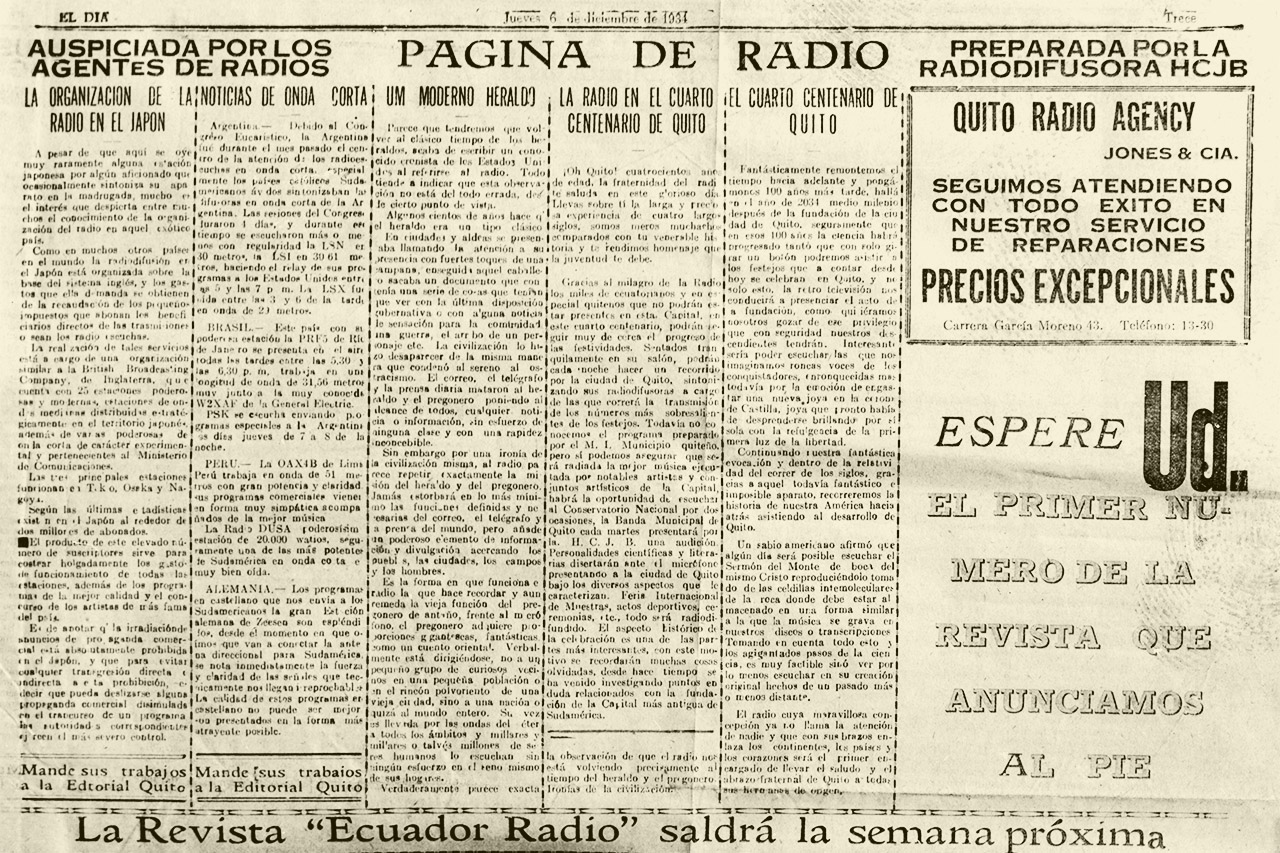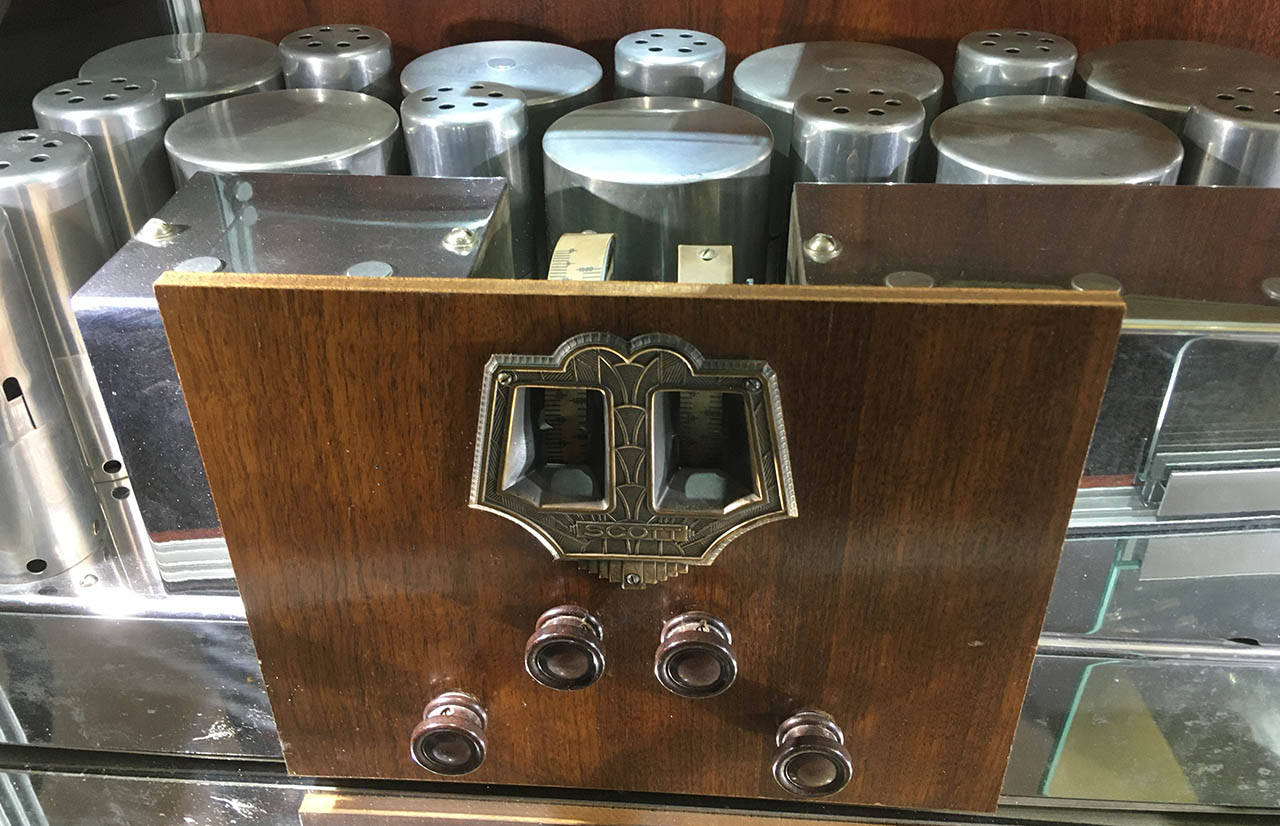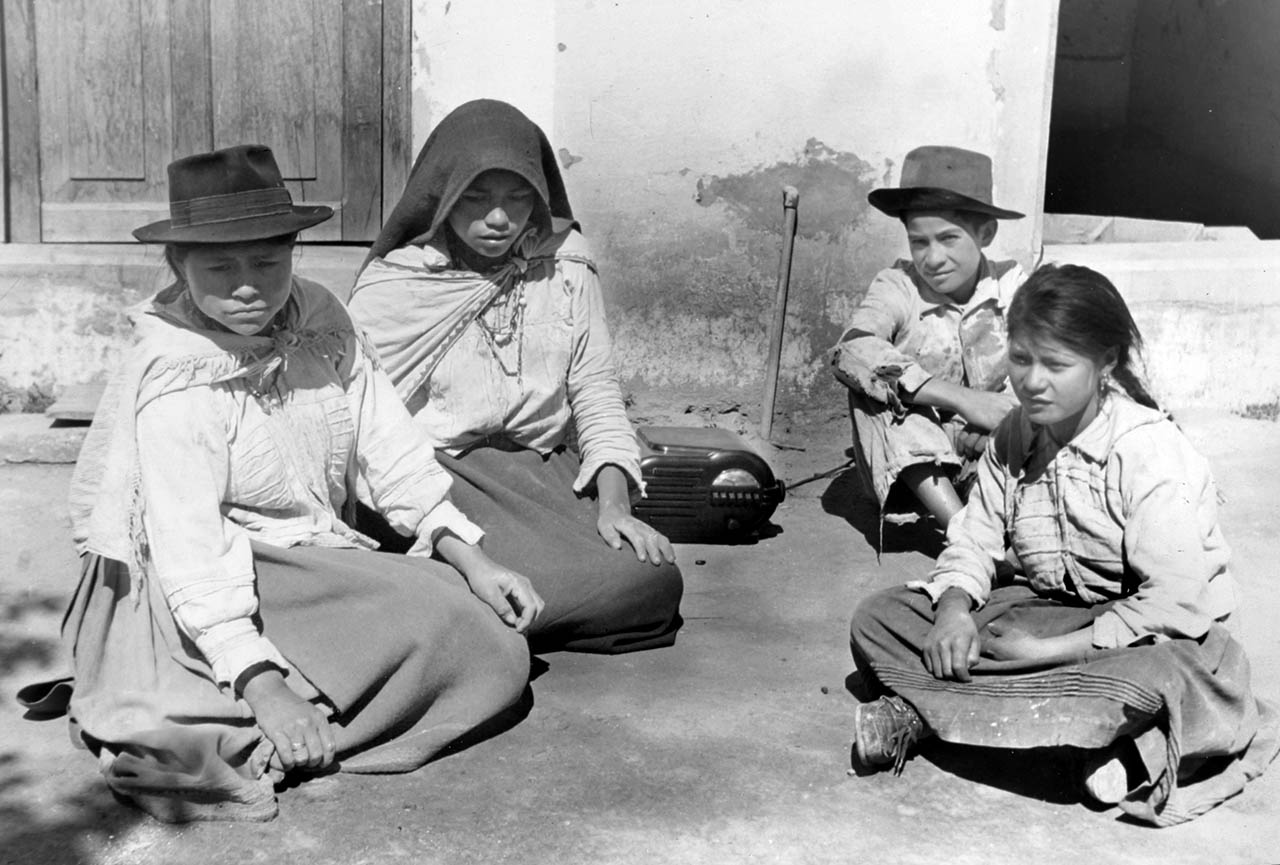 |
 |
Clarence Jones faced the enormous challenge of building an audience since there were only five or six radios in all of Ecuador.
Clarence started the Quito Radio Agency in 1932 to distribute and sell radios. Jones had imported eight radios which were loaned to government officials and dignitaries for the first official broadcast on February 21, 1932.
The Stradivarius of Radios
Jones had hoped to generate revenue for the station by selling high-end radios to wealthy land owners. He imported the finest radios made at the time—the "Allwave 12" made by E. H. Scott in Chicago, Illinois.
The polished metal open surfaces of the E.H. Scott radios were symphony to the eyes and the sound quality was unsurpassed. Big band leader Guy Lombardo thought highly of this radio, “I do not think the tone can be improved—it is already perfect.”
In the midst of the Great Depression, the Allwave 12 sold for $212 (about $3300 today).
Pictures of HCJB’s first program in 1931 show Eric Williams using the Allwave 12 to monitor the broadcast. An advertisement of E.H. Scott in 1932 mentioned that Chicago resident, A. Luomo used his Allwave 12 radio to listen to HCJB in Quito, Ecuador. E.H. Scott radio's metal tube covers shielded interference—allowing owners to clearly hear stations over 12,000 miles away.
Clarence tried to do whatever he could to build interest in radio. He wrote articles on radio and had them published in one of Quito's newspapers. He also tried publishing a small radio magazine.
Clarence had hoped that radio would "take-off" in Ecuador, so he was discouraged that it hadn't. Radios at that time were just too expensive for most people in country. Clarence and Eric Williams had hoped to manufacture radios at a more economical price, however that turned out to not be practical or possible at that time.
There was no way for HCJB to use radio to reach people with the Gospel if they didn't have access to a radio. Clarence would have to find other solutions.
 |
Radio Circle
In 1934, Clarence started the Radio Circle which established "listening posts" around the country. A radio would be entrusted to someone who would place it outside their home or at their business so that people from the community could listen to HCJB.
Next: 1936 - Evangelism on Wheels
